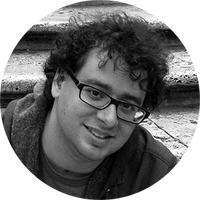The Lion King remake shows some stories aren't meant to be told in 'live-action'
Better technology doesn't necessarily mean better storytelling


During the stunning opening sequence of the 1994 hand-drawn animated movie The Lion King, there's a particular shot that stands out as especially unusual for hand-drawn animation. As animals all across the African plains assemble to genuflect at the presentation of a new lion cub (and future King of the Jungle), the camera racks focus from a close-up of ants on a tree branch to a background image of a zebra herd galloping toward the ceremony.
This was not the first time an animated movie emulated a technique of live-action filmmakers, but it was a particularly striking one, at the front of a massive Disney summer blockbuster. At the time, some critics even scoffed at the ostentatious nature of the shot, and the way it labored to create the impression of a traditional film camera: "The eye rejects the technique," The New Yorker's Terrence Rafferty stated matter-of-factly in his review. "It doesn't make the action look more real," he continued. "It just makes the image look a little less cheesy."
That rack-focus shot is repeated at the beginning of the new big-budget remake of The Lion King, and it's no less mechanical. Unlike the recent live-action Aladdin or even the largely animated The Jungle Book remake, director Jon Favreau's latest was created principally with VR technology, elaborating on roughed-out CG to enhance and tweak its scenes. It's been referred to as a "live-action" remake, because that's what other Disney remakes have been, at least to some degree, and because the animation is photorealistic enough to resemble live-action. But just as the original film was a milestone in Disney animation, the new one may mark a new, less visible turning point, where the lines between live-action and animation are blurred beyond recognition.
The Week
Escape your echo chamber. Get the facts behind the news, plus analysis from multiple perspectives.

Sign up for The Week's Free Newsletters
From our morning news briefing to a weekly Good News Newsletter, get the best of The Week delivered directly to your inbox.
From our morning news briefing to a weekly Good News Newsletter, get the best of The Week delivered directly to your inbox.
Back in 1994, The Lion King was a massive success for Disney, the crescendo of an early-'90s hit streak that built from Beauty and the Beast and Aladdin. Lion King's astronomical grosses turned out to be, in a way, the beginning of the end for that golden age, and for hand-drawn animation in general; many of the Disney cartoons released over the remainder of the decade were quite good, but none of them came close to that level of impact. Just 10 years after The Lion King, the company pivoted to computer-generated animation, first with the middling likes of Chicken Little and Bolt, and then with huge successes like Frozen and Zootopia.
The 2019 version of The Lion King is an apex of faux-live-action animation, with an impressive volume of photorealistic effects. It may be the dullest technological game-changer ever made. Even more than the other Disney remakes, it hews closely to the original's story, dialogue, and even some shot compositions. It's most pronounced during that "Circle of Life" opener, which is basically a moment-for-moment recreation. But even after this elaborate demonstration of fealty, Favreau doesn't give himself permission to depart from his source material — a choice that makes the limits of the new medium unavoidable. If the 1994 film pushes its "camera" dramatically in to emphasize a moment of horror from the cub Simba, the 2019 film will do the same thing, but with a less pronounced angle, and a far less readable action from a realistically rendered (which is to say, inexpressive) lion cub.
That lack of expression is the major way the new Lion King departs from its source material. The virtual animals may be voiced by the massively talented likes of Donald Glover, Beyoncé Knowles, and Chiwetel Ejiofor, but these CG creations have none of their real-life counterparts' charisma. There are flashes of personality from Seth Rogen and Billy Eichner reinterpreting the comic sidekicks Timon and Pumbaa, but most of the laughs come from their vocal performances, not the characters' movements or expressions.
The film's famous songs are drained of life too. Sometimes they're truncated; sometimes they just feel that way because the filmmakers must restrict the animals' movements to obey traditional physics. All of this makes The Lion King a deeply tedious, even frustrating experience to watch. It also makes it a landmark: a fully animated movie that feels actively hostile to the art and freedom of animation.
A free daily email with the biggest news stories of the day – and the best features from TheWeek.com
Photorealistic CG often has different goals from traditional cartoons, but it can be used in any number of inventive ways that depart from traditional 2D animation: to enhance and extend sets, to give human actors the illusion of otherworldly superpowers, or to bring virtual characters to life alongside "real" actors (the recent Planet of the Apes trilogy excelled in this regard). Here, it's used to "fix" The Lion King for anyone who ever thought its colors were too bright, its characters were too elastic, or its running time was too compact. (In the remake, almost nothing additional happens, but the narrative somehow finds an extra half-hour.)
Essentially, this new version blows up Rafferty's old complaint about the artificiality of the original's fake rack-focusing to a massive scale: This is a technological feat engineered for the sake of itself, using animation to imitate the textures of live-action for no reason other than no one has done it before. (Or, less charitably: to monetize nostalgia on a massive scale.) But in 1994, that show-off moment was eye-popping and new, even if it didn't look "real." In 2019, cutting-edge animation looks more real than ever — and far less amazing.
Jesse Hassenger's film and culture criticism has appeared in The Onion's A.V. Club, Brooklyn Magazine, and Men's Journal online, among others. He lives in Brooklyn, where he also writes fiction, edits textbooks, and helps run SportsAlcohol.com, a pop culture blog and podcast.



